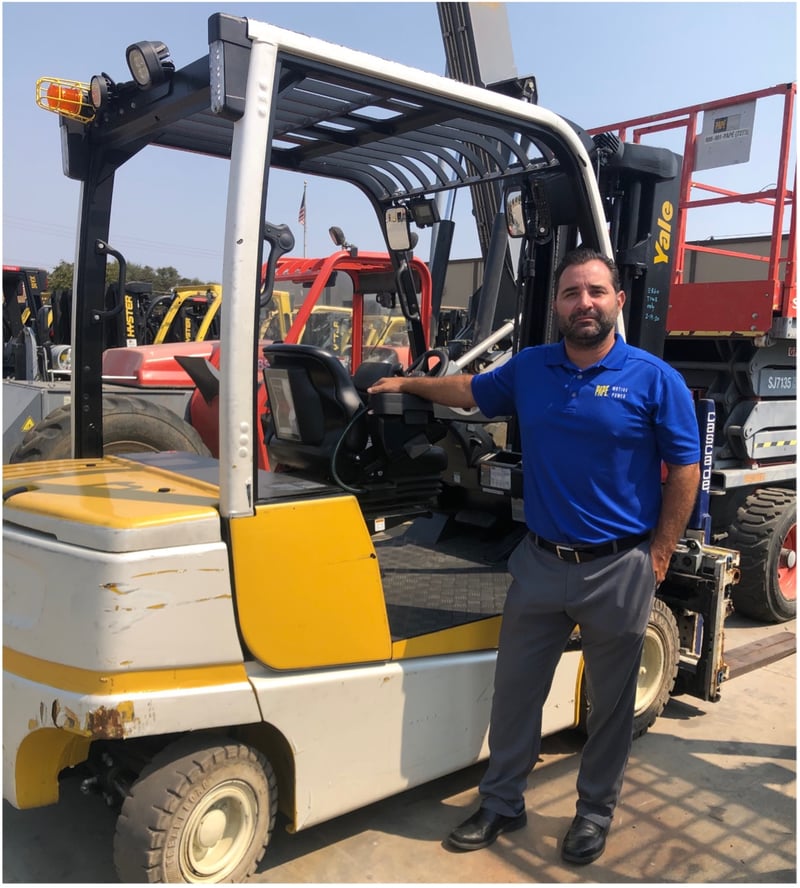 John Perazzo, Motive Power Regional Manager at PAPÉ’
John Perazzo, Motive Power Regional Manager at PAPÉ’ Cheap industrial batteries: Where’s the catch?
29550 Airport Road
Eugene, OR 97440
Phone: 800 443-5452
Fax: 541 681-5319
http://www.papemh.com
Motive power batteries for forklifts and other material handling equipment typically look very similar, with no differentiation of design or exterior features. Their technical specifications, like voltage and Ah capacity, are required to comply with the standard requirements of the host vehicles. However, there is often a significant price difference between different brands, which stems from the functionality of the battery management system (BMS), but also from other parts of the “total product”: delivery and installation; options for integration with the forklift and charger; and the availability of support, service, and parts.
What helps cheaper batteries stay cheap?
Cheap overseas labor can be a major factor in the US retail price when the production volume is large, but this is not the case for the relatively niche forklift lithium battery market. Transportation costs and longer lead times are leveling out this advantage. What is it, then?
First and foremost, it is the limited functionality provided by a basic-level BMS. In our latest article focusing on the key factors extending the cycle life of a lithium battery, we argued that an advanced BMS plays a major role in preventing battery degradation by providing real-time diagnostics, equalizing the charge of individual cells, and safeguarding and optimizing the charge and discharge processes. A standard, off-the-shelf BMS with no adjustment for use in material handling and no advanced functions may give a price advantage, but also cause a lot of headaches to battery users.
An inexpensive battery bought online from overseas, as you’ll see in the real-life example provided by PAPÉ’s Motive Power Regional Manager and top expert John Perazzo below, arrives at your door as if a forklift battery is as easy to install as a AAA battery in a TV remote. It is not. Not only does it require a second forklift or crane to remove the old battery, but a trained technician is required to properly connect and run tests on the battery, including connectivity, safety, and operation checks. On the other hand, installation and setup costs are typically included in the price of a US battery brand.
Taking into account the potential service needs, the labor costs of initial installation will add up going forward.
What is not included in the lower price, is the cost of downtime: in the best-case scenario, it equals the rental costs while you wait for spare parts to arrive. In the worst case, when the replacement is not quickly available, it equals the cost of business operation downtime.
An online purchase of a lead-acid battery that went wrong
Here is the story as it was told by John Perazzo, the motive power expert. PAPÉ had a customer in San Francisco for whom they quoted a replacement battery for a 5000-pound electric forklift. The customer called in to say PAPÉ’s offer was $2,000 higher than “the internet guy” and so PAPÉ lost the bid.
A month later, the customer received a battery via a common carrier and was unable to install it because the old battery in his forklift was dead. Had he placed the order through PAPÉ, the new battery would have been delivered and installed, and the old battery would have been removed and properly disposed of, all included in the price. Instead, the customer needed to pay PAPÉ $450 for the installation.
About 90 days later, this customer had a cell failure, contacted the manufacturer, and a replacement cell was shipped to him. This was another $500 service call for PAPÉ to come and have the cell installed.
Meanwhile, the customer’s only forklift was down again while he waited for the cell. He ended up paying $900 for a rental. Not to mention the headache and downtime he experienced and the time spent overcoming these hurdles.
“So we were $2000 more expensive up front, so he bought (a battery) from the internet,” says John Perazzo. “Once it was all said and done, the customer expressed the understanding of having local support for a product and that he wouldn’t make that mistake again.”
Conclusion
The technical specifications, size, weight, connectors, controls, and exterior design may be almost identical for industrial batteries from different brands. However, it is risky to treat industrial batteries as a commodity. The key differences are in the mechanical and electrical design, electronics and software, as well as in the level of local support and parts availability. To choose an industrial battery, operators need to understand the benefits and trade-offs of the total product to avoid painful losses with potential downtime and extra labor costs.
About the Author:
Maxim Khabur is a Director of Marketing at OneCharge, one of the US leading manufacturers of lithium industrial batteries, and a Chairman of the Advanced Energy Council, representing a group of companies – members of the MHI.org (Materials Handling Industry) Association.









